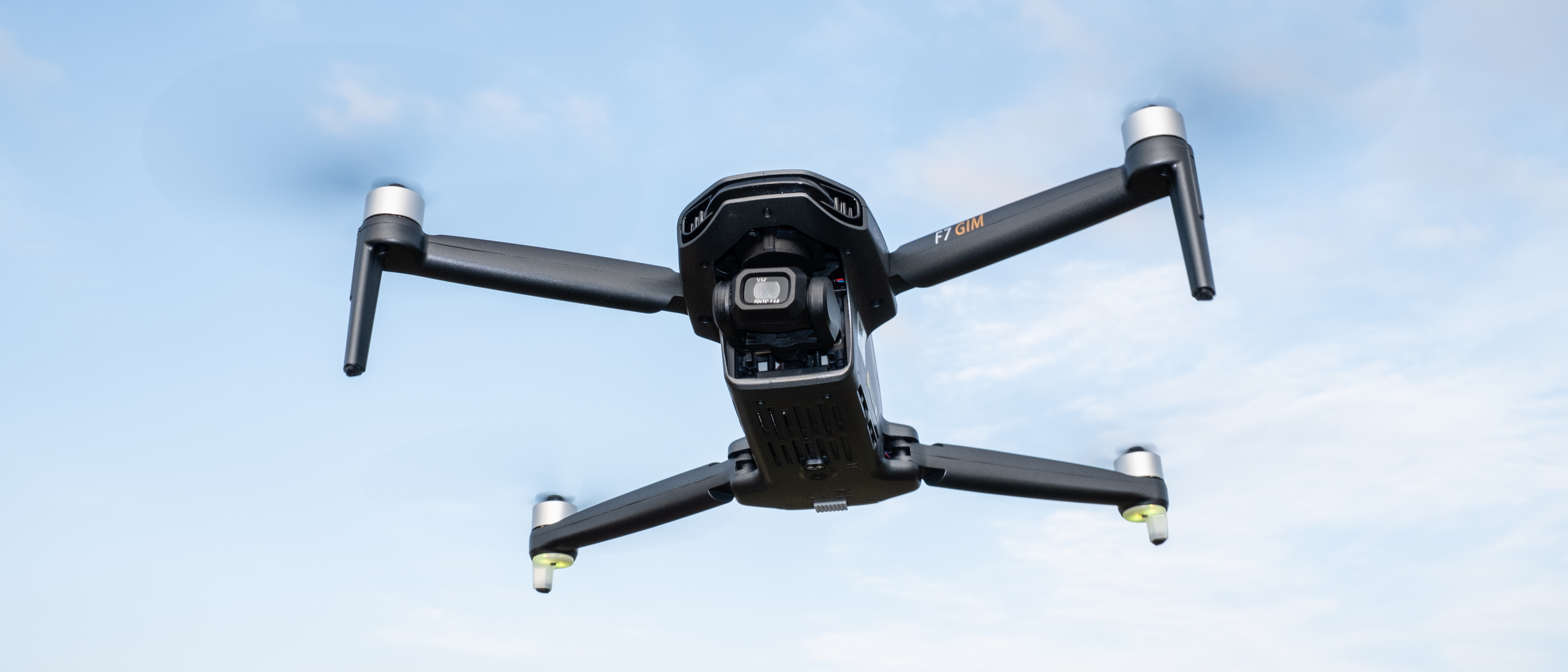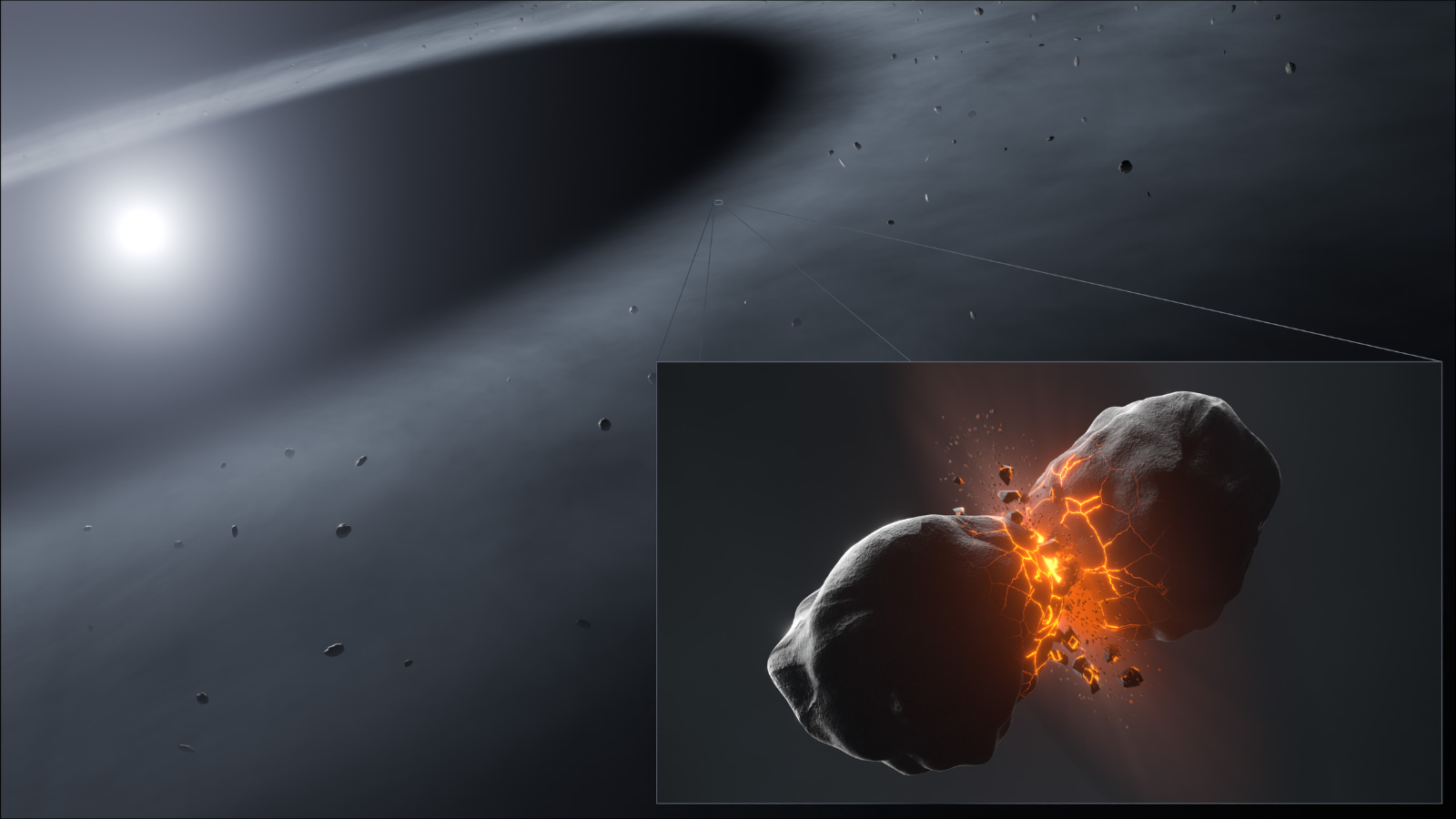Space Verdict
The Bwine F7GIM is an incredibly easy-to-use beginner drone with a respectable automatic camera, but it’s expensive compared to bigger-name competition. It's also over the 250 g weight limit, meaning beginners will need to register it with the FAA in the U.S., even for recreational use.
Pros
- +
Reasonable image quality
- +
Good flight performance
- +
Easy to use
Cons
- -
Above the 250 g weight mark
- -
Expensive for what it offers
- -
Automatic camera
Why you can trust Space.com
Beginner drones come in many shapes, sizes and styles these days, making the list of the best beginner drones more varied than ever. The Bwine F7GIM is a pretty run-of-the-mill beginner model that’s easy to use and offers a fully automatic camera for capturing photos and videos. It’s nothing special, but that’s certainly not a bad thing.
The Bwine F7GIM is something of an oddball in terms of weight because at 12.6 oz / 357 g it will require registration with the FAA in the U.S, even for recreational use. The focal length of the camera is 60 mm, which means you can capture subjects from further away, which works well given the weight. Put simply, you don’t have to fly as close as with a 24 mm equivalent camera.
Weight: 12.6 oz / 357 g
Dimensions: 6.50 x 3.54 x 2.56 in / 165 x 90 x 65 mm folded / 14.17 x 11.02 x 2.56 in / 360 x 280 x 65 mm unfolded
Battery: 3200 mAh Li-ion / up to 35 minutes flight
Charger type: USB-C cable
Modes: Stable (Camera), Sport
Video transmission range: 1.89 miles
Video resolution: 4K, 2.7K, 2K, 720p (720p stored on phone)
Frame rates: 4K 30 FPS, 2.7K 50/30 FPS, 2K 50 FPS, 720p 30 FPS
Image quality is respectable, and you can capture photos in JPEG format up to 5700 x 3200 px, which equates to 18MP. Video can be captured up to 4K 30 FPS, while reducing the capture resolution to 2.7K and 2K allows for 50 FPS capture. This is all pretty standard for a basic drone like this, which also offers a handful of useful features we’ll cover later.
The drone is perfectly adequate in most ways, but it is on the expensive side considering the other drones are available for a similar price. These include the DJI Neo and the Potensic Atom 2, both of which are superior drones. However, the F7GIM could still be exactly what you’re looking for, and it does excel in one or two areas, including wind resistance.
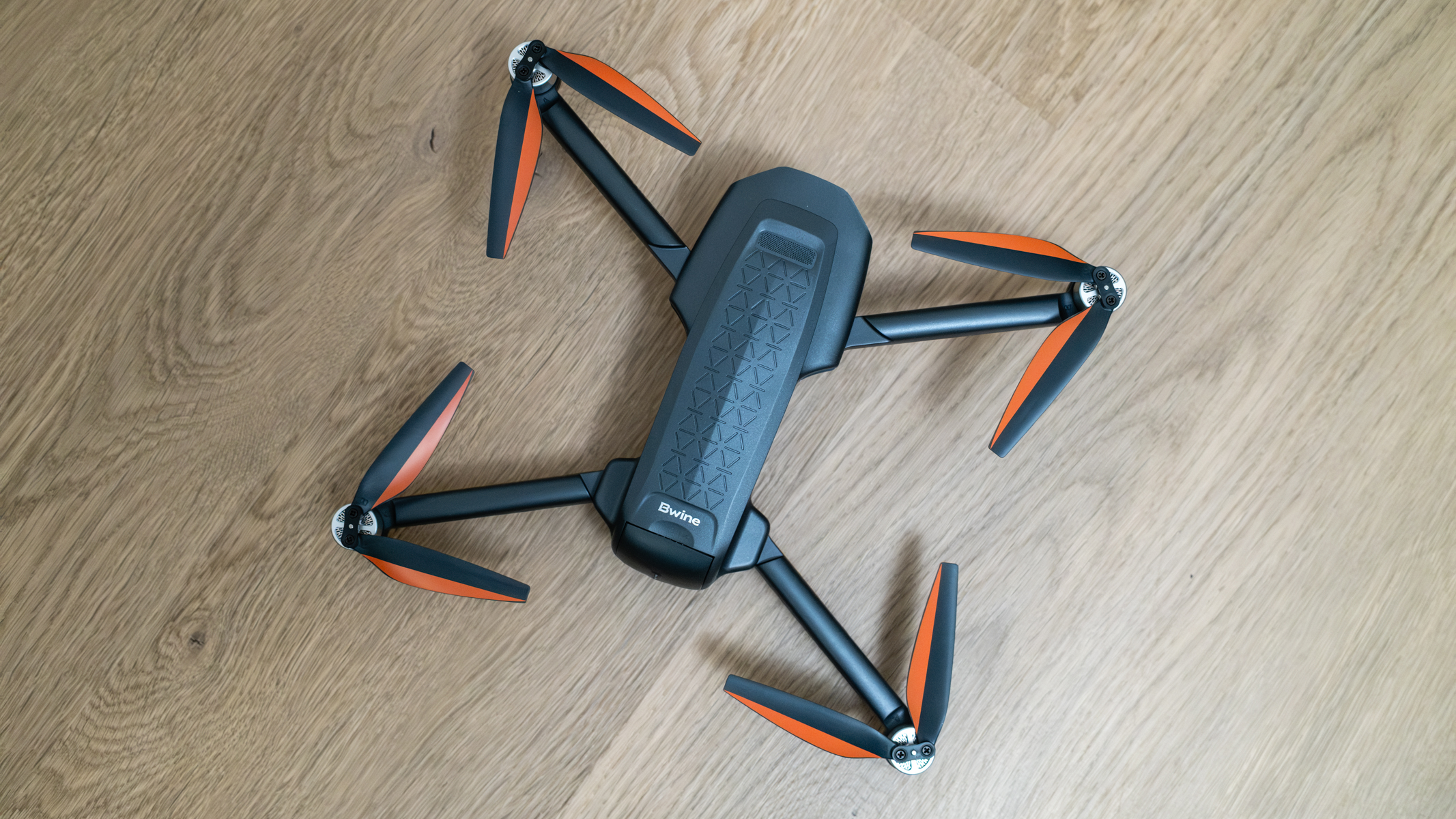
Potensic Atom 2 review
Bwine F7GIM review: Design
- Pleasant gray and orange color scheme
- Lightweight but over 250 g
- Folding design
This is a compact folding drone that’s just 6.50 x 3.54 x 2.56 in / 165 x 90 x 65 mm when folded and 14.17 x 11.02 x 2.56 in / 360 x280 x 65 mm when unfolded. Looking at it, you could easily mistake the F7GIM for being a sub-250 g model, but it sneaks in at a weight of 12.6 oz / 357 g. As previously mentioned, this means it has to be registered with the FAA in the United States. The drone does feature Remote ID, making it FAA-compliant.
The weight of the F7GIM certainly isn’t the end of the world, but it is something to consider if you’re only looking for a drone for recreational flight. Many beginners opt for sun-250 g models precisely because of not having to register. Not to mention, they’re also smaller and lighter to carry around.
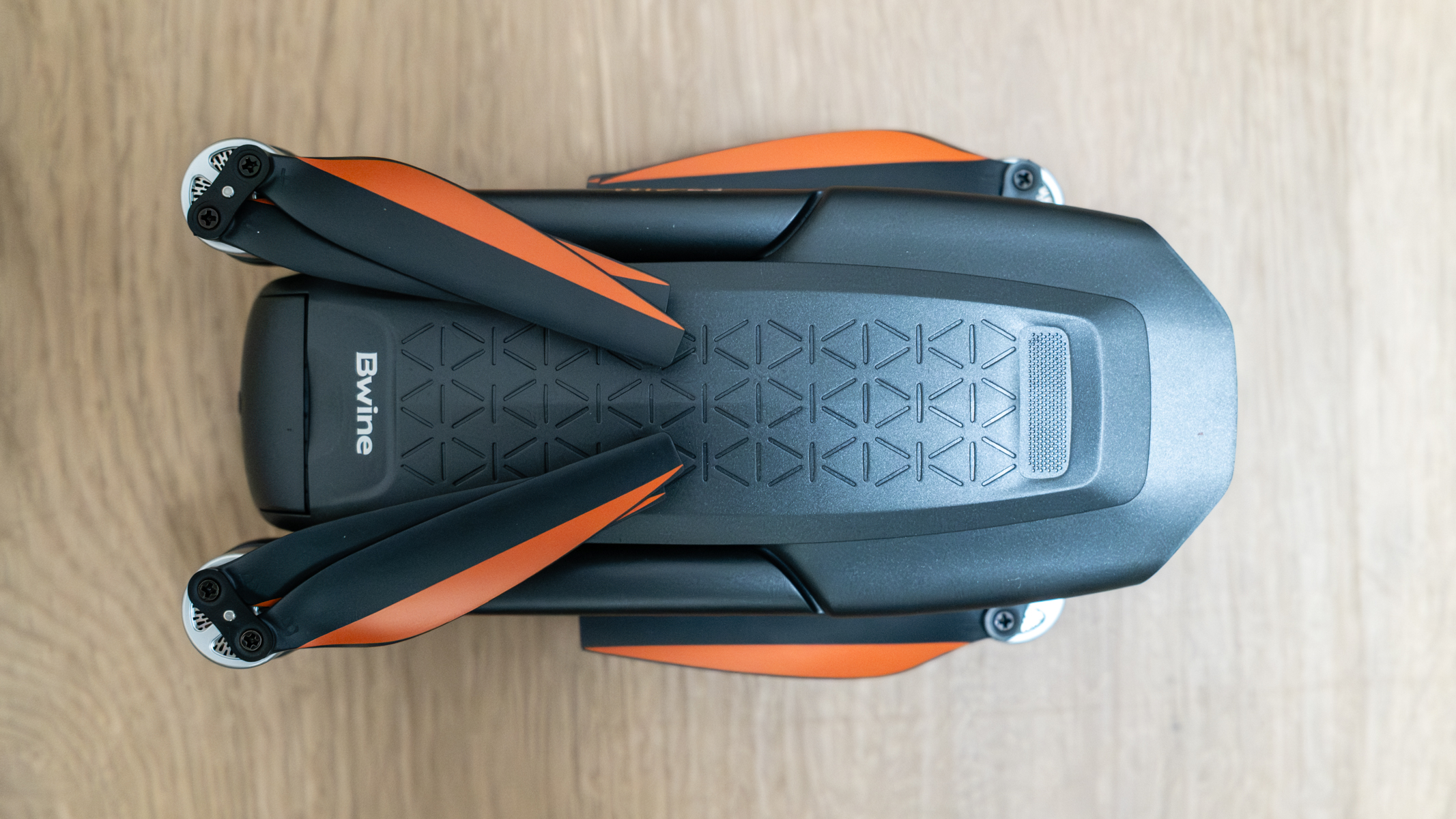
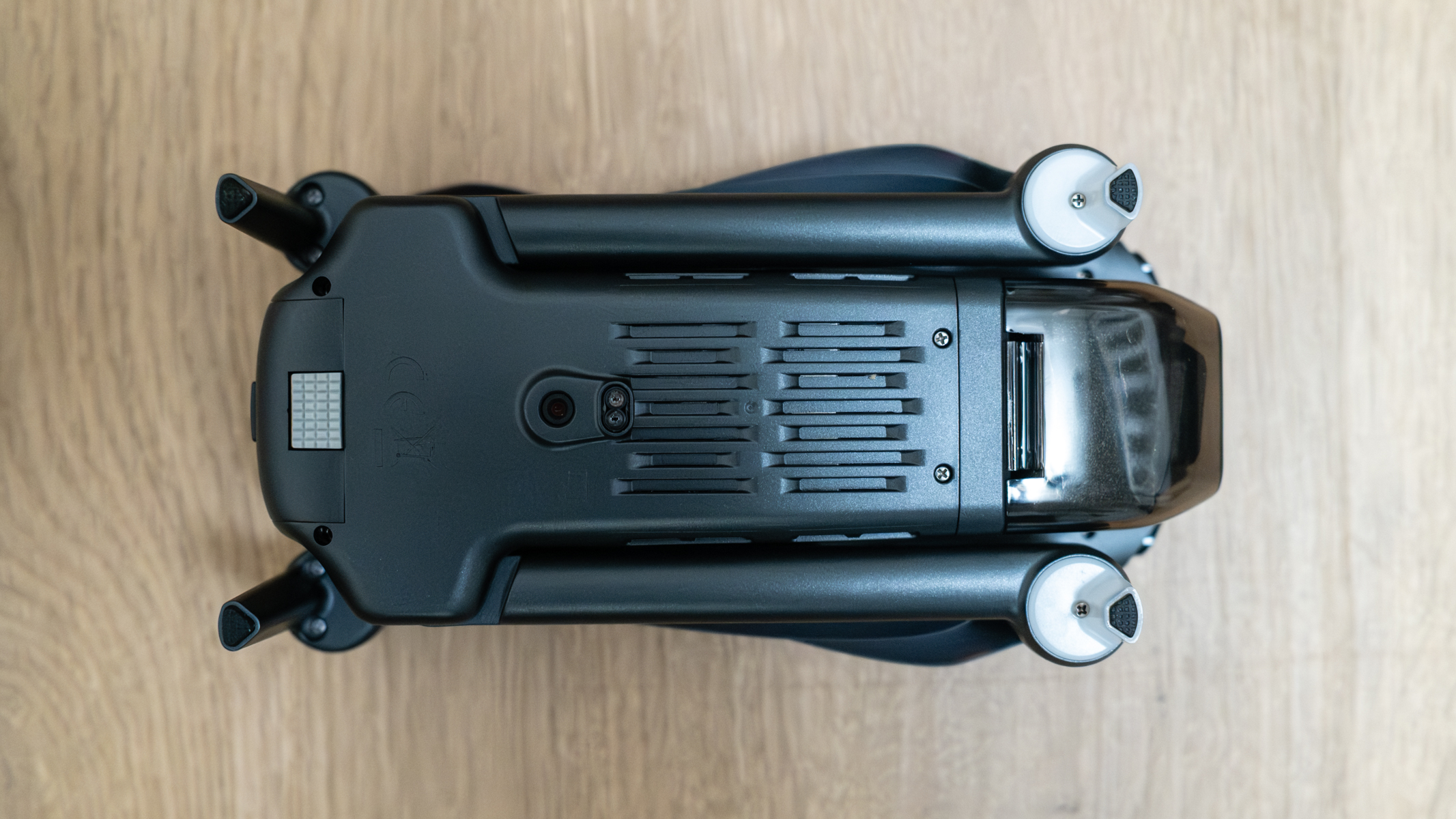
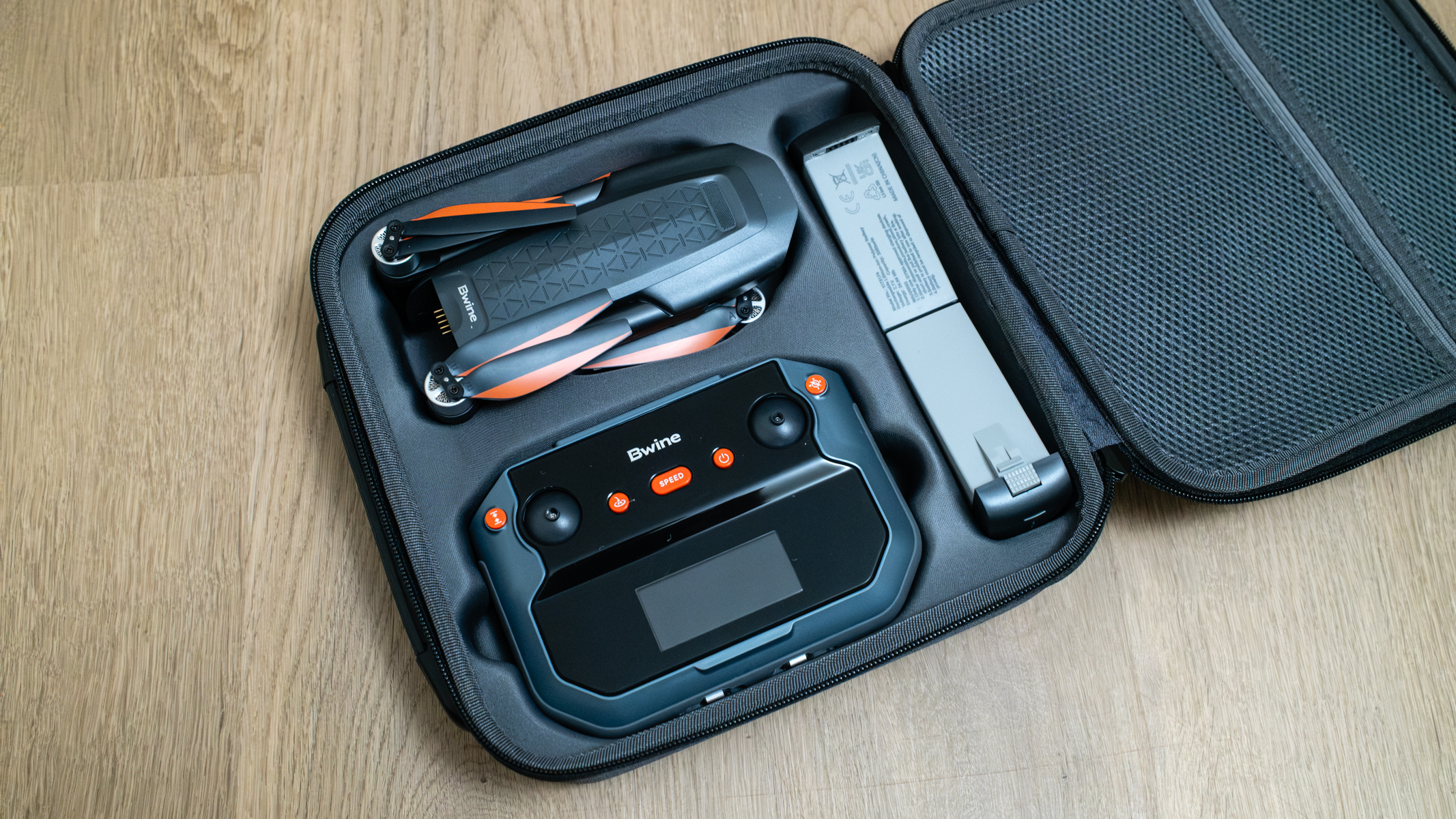
Getting back to the design, the drone comes in a dark grey with orange accents on the propellers, which does look good. Build quality can’t be faulted, while the camera and 3-axis gimbal are well-made.
Breaking space news, the latest updates on rocket launches, skywatching events and more!
There’s also an optical flow sensor on the bottom of the airframe for detecting the ground during low-level flying and to assist with landing. As you’d expect, there’s no collision avoidance.
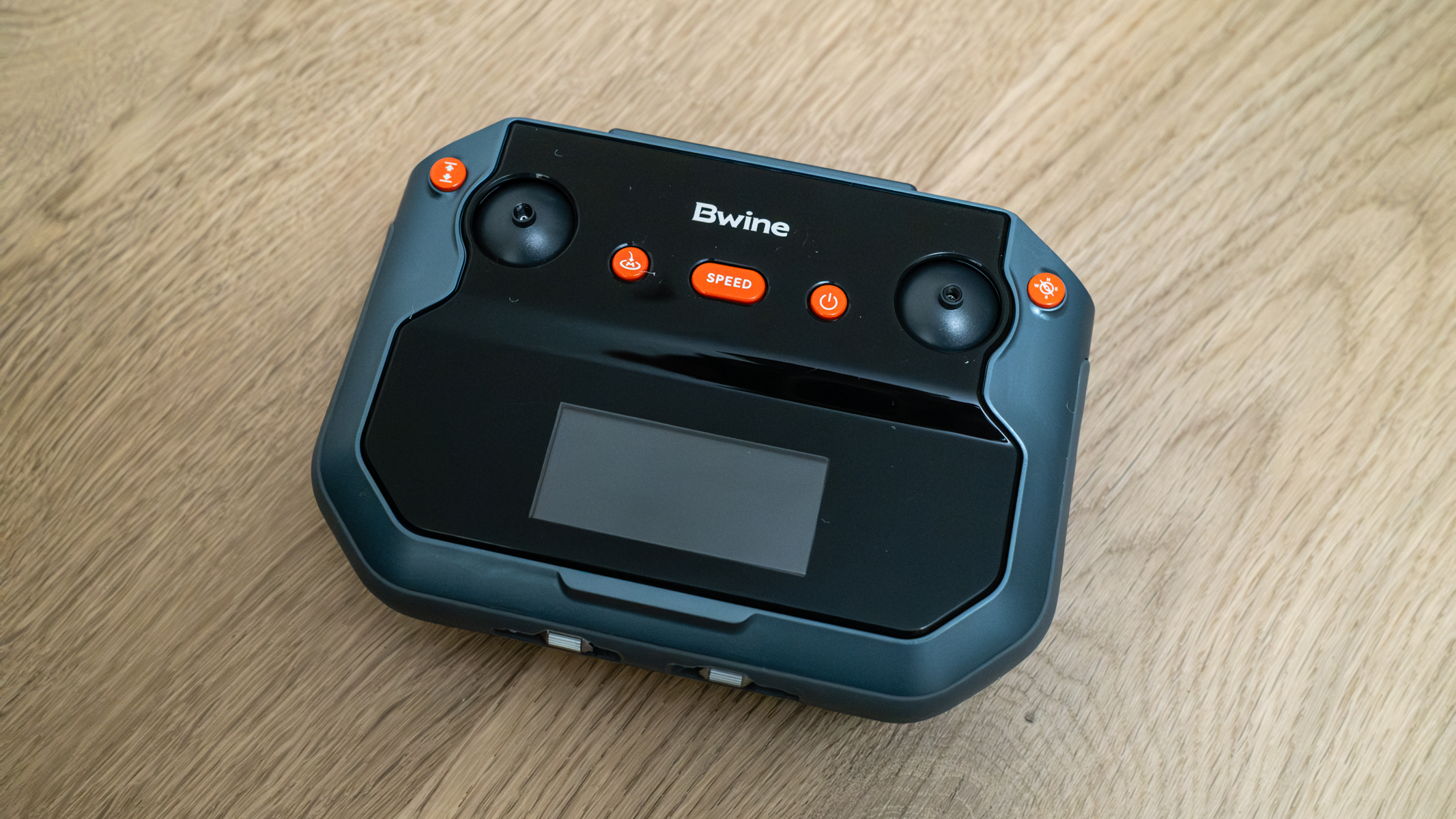

The controller is of a reasonable quality and is quite chunky and comfortable to hold thanks to rubberized grips. It features a small screen that shows basic information, but it’s not bright, so it can be difficult to view in sunny conditions.
The controller offers a range of direct access controls, and the control sticks can be stowed at the bottom of the controller for transportation and storage. The phone holder extends from the top of the controller with space to store the phone cable when not in use.
Bwine F7GIM review: Functionality
- Level 5 wind resistance
- Smart Return to Home
- Basic subject tracking
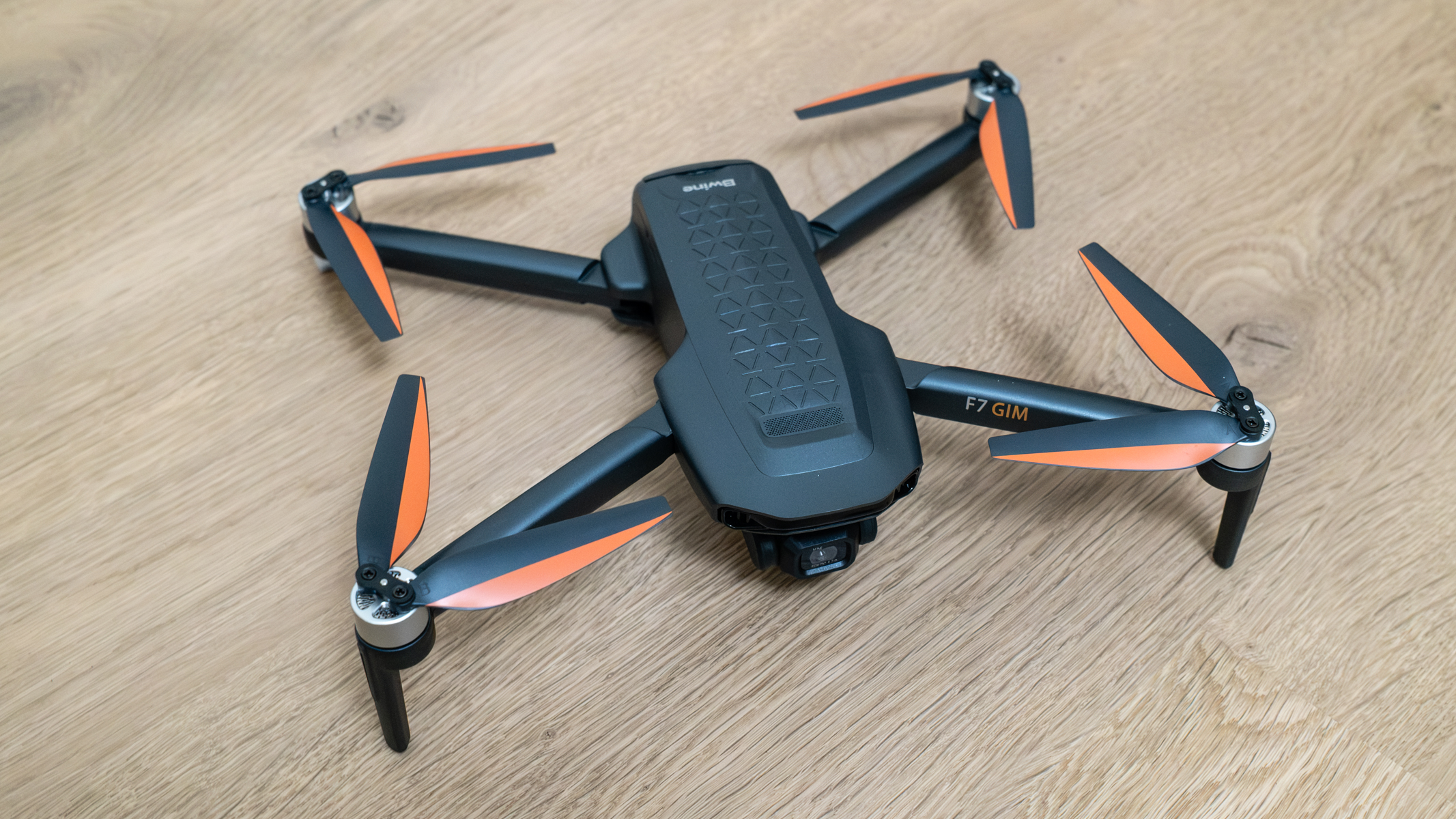
The F7GIM comes with a level 5 wind resistance rating, which equates to wind speeds of up to 24 mph. The drone was tested in winds of this speed and it had no issues whatsoever, although this is the same wind resistance level as many lighter sub-250 g models. With the weight increase, a power increase would be welcome, but it’s unfortunately absent.
Flying in winds of around 25 mph provided flight times of around 22 minutes, as opposed to the advertised 35 minutes, but it’s safe to assume that less windy conditions would provide longer flights. This would most likely be just a few additional minutes rather than the full advertised 35 minutes per battery, which is optimistic at best.
The F7GIM features GPS and Return to Home (RTH) functionality, and you can set the RTH altitude within the Bwine Mini app. By default, this is set to the minimum of 20 m, so be aware of your surroundings when making your first flight and adjust accordingly.
Return to Home can be initiated by the pilot when the battery is low and when the controller connection is lost. Smart RTH allows you to also control the drone during the return process to avoid obstacles.
There are a few basic subject tracking functions available, but during testing these weren’t the best examples I’ve experienced. The GPS follow was the most reliable since it tracks the controller, but the subject doesn’t always remain in the centre of the camera frame. Orbit, where the drone orbits the subject, was unreliable and haphazard.
Despite these features lacking in performance, overall flight performance is great and can’t be faulted. The controller allows for precise movements, and the gimbal is smooth when incorporating gimbal movements with flight to capture interesting video footage. This is always a good test of drone gimbals, and the F7GIM passed with flying colors.
Within the main feature menu, there are also quite a few other options, including Route Planning, VR Split Screen, Digital Zoom, Night Mode to increase brightness in the app camera view and several other options.
The Bwine Mini app is basic and easy to use, which is ideal for beginners. One point to mention is that by default, the drone is set to Beginner Mode, which limits altitude and flight distance, so you’ll have to manually switch this off to increase both of these.
Bwine F7GIM review: Performance
- Fixed focus 60mm lens and 3-axis gimbal
- Up to 4K 30 FPS video
- Automatic camera

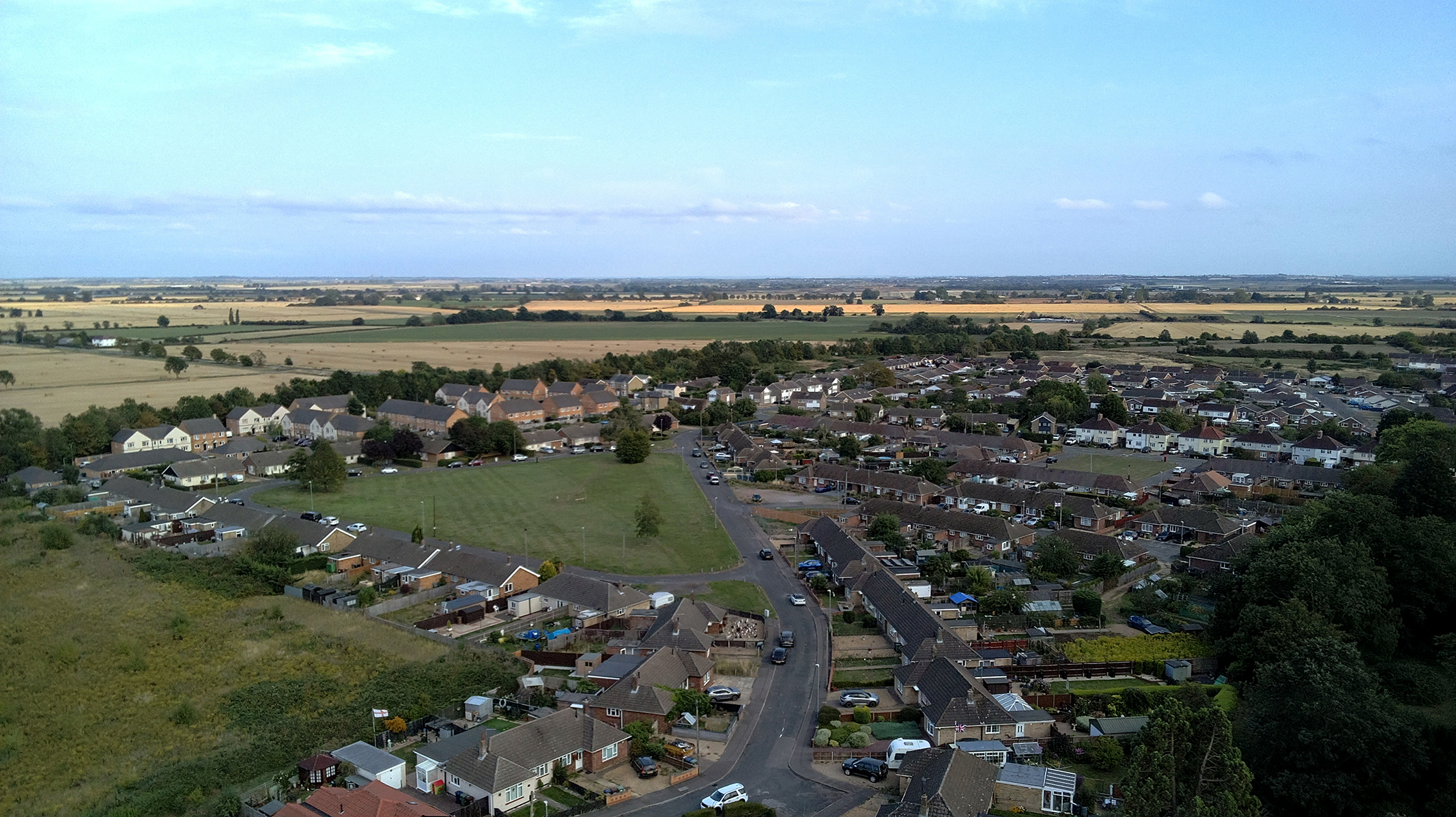


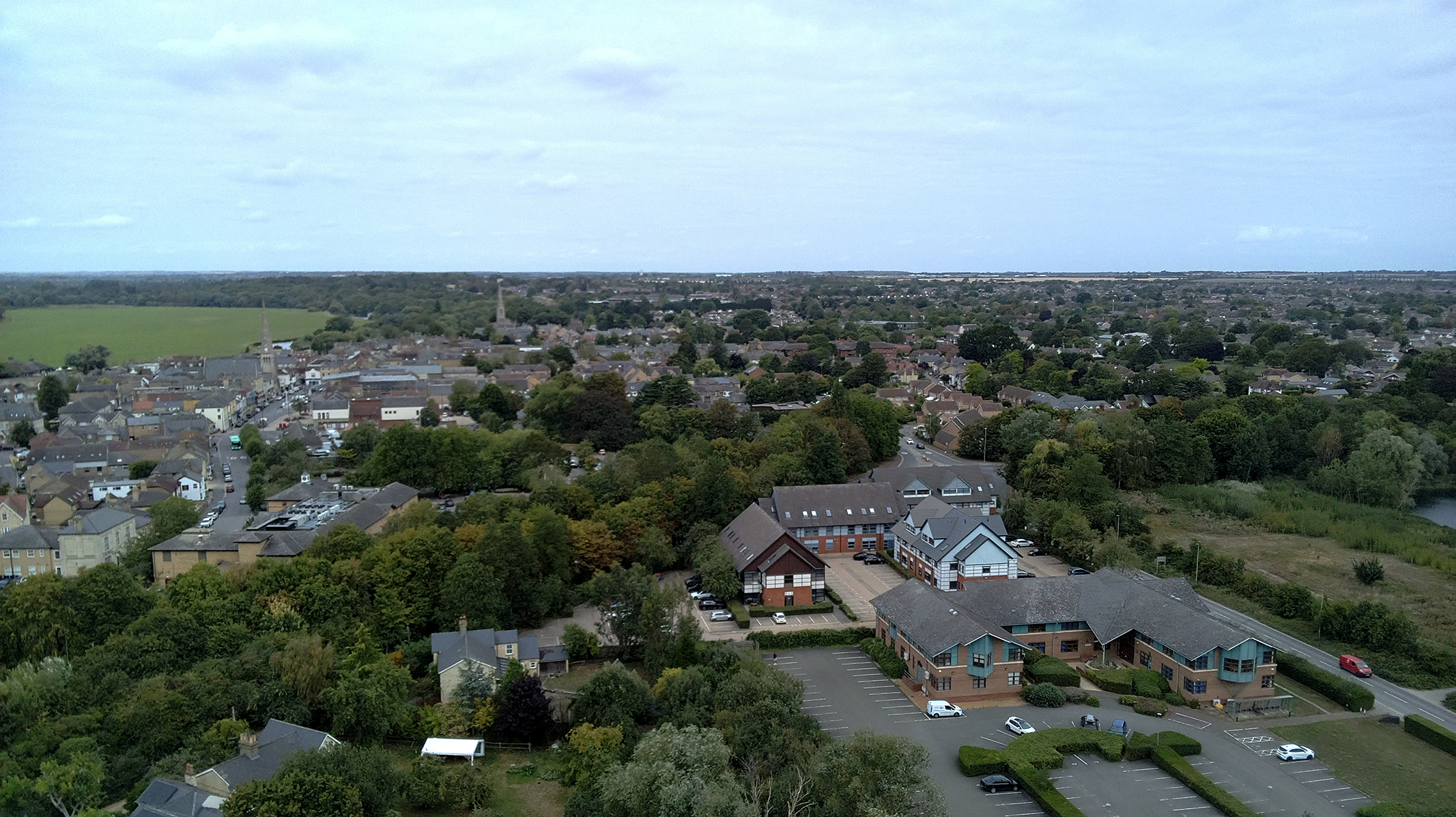
The F7GIM camera features a 1/3.2 in Sony sensor with a 60mm equivalent focal length and an f/2.0 aperture. This is a long focal length for a single-camera drone, but it seems to work. The camera is supported by a 3-axis gimbal, resulting in smooth video capture.
The important point to make here is that the camera is fully automatic with fixed focus, so you have no control over any settings. This is perhaps ideal for photography beginners, but less so for enthusiasts.

Image quality is surprisingly good despite the fully automatic camera, although it does have a depth-of-field issue. Objects closer to the camera are lovely and sharp, but those in the distance do fall out of focus.
The centre of the frame is also characteristically sharper than the outer area, which is normal for most drones, and since the camera is automatic, it’s best to shoot with the sun behind the drone for more reliable exposures. With no control over exposure compensation, shooting towards the sun results in underexposure.
Bwine F7GIM video
The only variables that can be changed are the resolution and frame rate of video, while the resolution of photos can be adjusted to three different amounts. Photo sizes are in a 16:9 ratio and are captured in JPEG format. The resolutions available include 3840 x 2160 px, 4096 x 3072 px and 5700 x 3200 px.
Video can be captured in 4K 30 FPS, 2.7K 50/30 FPS, 2K 50 FPS and 720p 30 FPS. 720p is stored on your phone, alongside photos, so you have to keep an eye on how much storage it’s using over time. It’s a shame this can’t be switched off if desired. Other footage and photos are stored on the microSD card in the drone, and the F7GIM can accept 16 to 128GB cards. Video quality is, as is often the case with drones, better than photo quality.
Bwine F7GIM review: Cost
The Bwine F7GIM is a respectable beginner drone, but where it ultimately falls is in its price of $400 / £296. This puts it in direct competition, price-wise, with the DJI Neo and the Potensic Atom 2, which are both more advanced drones with superior flight performance and features in general.
If the F7GIM was less expensive, it would be a much more attractive proposition, although it’s not a bad drone at all if you’re willing to pay that price. Like all tech, it depends on what you're looking for in terms of brand and features.
The drone comes in a kit which includes the drone, controller, two batteries, an extra set of propellers, an extra set of controller sticks, phone cables, USB-C cables for charging, a carry case and other accessories. This is everything you need to get started.
Should you buy the Bwine F7GIM?
This is a tricky one because the F7GIM is a good beginner drone. It flies well, image quality is good for a basic model of this type and the fully automatic camera makes it incredibly easy to capture photos and videos. What’s more, the kit comes with everything you need and more in terms of the accessories that are included.
The main issue is the price, which is too close to bigger-name and more advanced drone models. However, if price isn’t an issue for you, you won’t go wrong with the F7GIM. It may be the simplicity of the camera that attracts some people to it because it’s very much a point-and-shoot affair.
If the Bwine F7GIM isn't for you
The DJI Neo is a sub-250 g beginner drone that can be flown autonomously with impressive subject tracking functionality, with the DJI Fly app via your smartphone or using a traditional controller. The drone can capture 4K video and photos in JPEG format.
The Holy Stone HS900 Sirius is another sub-250 g beginner drone worth considering, thanks to excellent flight performance, impressive image quality and useful features. Video can be captured up to 4K and photos in Raw and JPEG.
The Potensic Atom 2 is the best DJI alternative available in a regulator-friendly sub-250 g package. This impressive drone is available at an attractive price and can capture 4K video and photos in Raw and JPEG.
James is an award-winning freelance landscape and portrait photographer, as well as a highly experienced photography journalist working with some of the best photography magazines and websites with a worldwide audience. He’s also the author of The Digital Darkroom: The Definitive Guide to Photo Editing. www.jamesaphoto.co.uk
You must confirm your public display name before commenting
Please logout and then login again, you will then be prompted to enter your display name.
